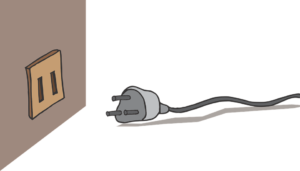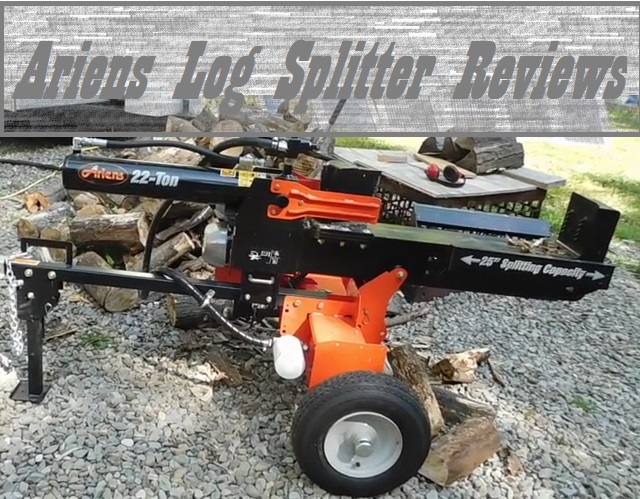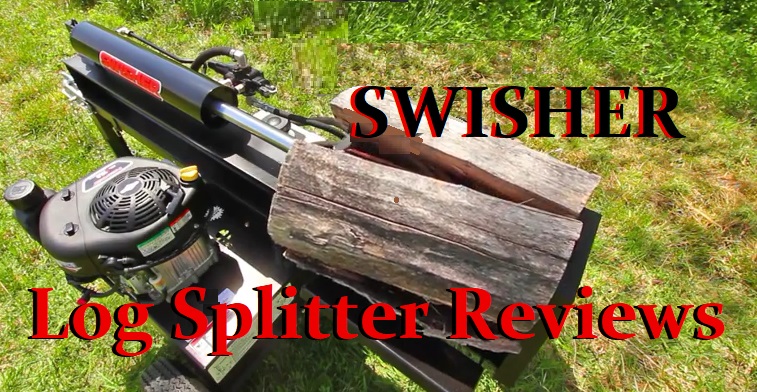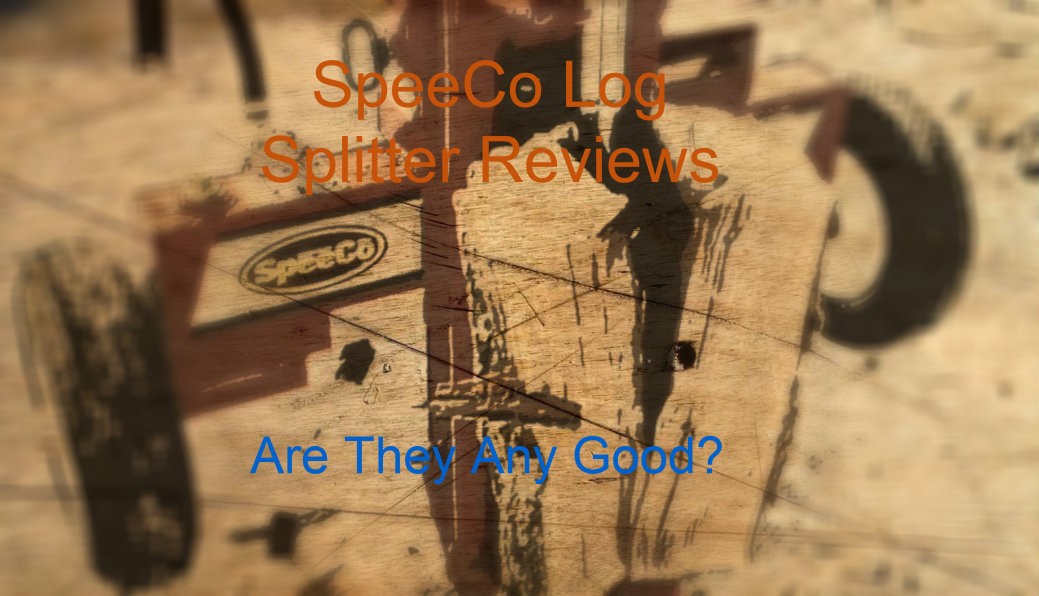I hope you love the products I've recommended below, just a heads up that as an Amazon associate, I earn from qualifying purchases. This means I may earn commissions on products bought via links on this page.
Powerhouse aren’t the most known log splitter company on the market. So I jumped at the chance to review Powerhouse log splitters, and find out how good they are. What I want to discover today is just how good there offering to the log splitter community is. Not only how good there products are, but learn about the company itself.
While Powerhouse have a few different log splitters on the market, it is there flagship 7 ton electric, 9 ton log splitter, and their kinetic offering I will be reviewing today. The 7 ton being their most focused log splitter, which will help understand if they’re a company to keep an eye on. If you’re not really interested in an electric log splitter, and looking for a gas splitter I have other reviews here, or interested in a more heavy duty electric splitter here.
Why Go With Powerhouse For Your Log Splitting Needs?
With so many companies out there offering there log splitters. What makes Powerhouse worth your hard earned? This is the question at the end of the day, if they do enough to earn that. Normally I’d go try and research the company and find out where they’re from, and where they  manufacture. Sadly this is something I couldn’t find out, which isn’t a great start for me.
manufacture. Sadly this is something I couldn’t find out, which isn’t a great start for me.
I have found when you can’t find this basic information, it usually means made in China. Why I understand some companies hide this, I don’t think it’s necessary. Made in China doesn’t mean bad by any stretch. If you check your house you will find a lot of made in China products, that work perfectly fine. This is still a guess from what I can find, and by no way 100% guaranteed. I just know being made in China doesn’t bother me as much as it does some others. If you do want an American made log splitter, you can find my review here.
The one thing I found after reviewing the log splitters on this list. Is that they do make some incredible log splitters, while not the most powerful. They do provide a good value for money in my opinion.
Powerhouse Electric Log Splitter Reviews
Powerhouse XM-380 7 Ton Electric Log Splitter Review

![]()
This is Powerhouses flagship log splitter and probably my personal favorite log splitter, that they make. My experience with this log splitter has been overwhelming positive, with barely any issues others have had. The engineering of this log splitter is quite impressive, it’s lightweight, sturdy, and packs quite a punch for a 7 ton electric splitter.
Depending on the type of log you’re splitting it, it can handle some pretty large logs. Especially if you’ve dried the logs out properly. While I never split anything over 20 inches in diameter, that was dry, straight grained wood, which is easier. I wouldn’t normally split something of that size with this splitter. I’d be looking more at 12 inches in diameter if it’s dried wood. If the wood is green, I wouldn’t attempt over 6 inches.
It’s a surprisingly quick log splitter, normally taking about 12 seconds for the ram to full retract. This does depend on what you’re splitting, it may take longer. It can take some decent sized logs with a rough 20 inches in length. Again if you’re trying to split green wood(not Recommended) I wouldn’t put larger then 12 inches in there.
It is a 2 lever system which helps reduce the risk of injury, which is important when using dangerous tools such as this. This only refers to the ram pushing, and not retracting which is a nice touch. When you let go of the lever the ram starts to retract, which does make operating this log splitter a bit more comfortable.
What I Dislike
To be honest there isn’t a whole lot to dislike about this log splitter, The biggest issue isn’t even the log splitter itself, it’s the badly translated user manual. The instructions can make it difficult when putting it together, which is something to keep in mind. I find it hard to dislike this log splitter, I didn’t have any issues. The one thing I did notice is this log splitter doesn’t like the cold to much, but once it warms up it’s perfectly fine.
The Specs
- Electric Motor – 120 Volts, 3.5hp – 2500 Watt
- Max Force – 7 Tons
- Log Size Capacity – 20.47 Inches Length – 11.81 Inches Diameter
- Ram Travel – 15.75 Inches
- Ram Diameter – 1.18 Inches
- Hydraulic Fluid Capacity – 105 – 121 oz
- Weight – 104 lbs

Powerhouse 9 Ton Log Splitter Review
Powerhouse XM-580 9 Ton Log splitter

![]()
Technically this is the big brother of the Powerhouse wood splitters, which in terms hydraulic power it is. Having 9 tons of force is really useful if you need to split something a little more stubborn. While it won’t replace your gas splitter, it makes up for it by not require much space, and being able to split inside. This is a big plus for these electric splitters I haven’t gone over yet.
The splitting power of this machine is only a little better then there 7 ton unit, which makes a small difference. The biggest difference was it felt like it go through some logs a little easier, it didn’t really split anything larger. While I don’t mind this log splitter, I just preferred the 7 ton. Whether this is because they spent more time engineering it, it just felt like a better unit in my opinion.
So why would you choose this unit over the 7 ton model above? This is a tough question and only one that you can really answer. The biggest thing for this log splitter is that it can split things a bit easier. So it can handle those slightly more knotted wood, or more hard types of wood. So if that’s what you need, then this is a better unit for your situation. If not I’d go with the 7 ton. This certainly doesn’t mean this is a bad log splitter.
What I Dislike
While I don’t dislike this splitter, I think I was just hoping for a bit more extra power. That’s really the only downside for me on this splitter, which isn’t even that big of an issue. It will still split what it was designed to split, and it will exceed at that.
The Specs
- Electric Motor – 120 Volts/60 Hertz/ 19.5amp
- Max Force – 9 Tons
- Log Capacity – 20.47 Inches Length – 11.81 Inches Diameter
- Hydraulic Oil Capacity – 104 oz
- Weight – 108 lbs

Powerhouse Kinetic Log Splitter Reviews
Powerhouse XM-880 Kinetic Log Splitter Review

![]()
If you’ve never heard of a kinetic log splitter, you’re in for a treat. How many times have you been splitting a log, just waiting for it to to finish splitting. Wanting to do the next log, which makes the chore last for hours. With a kinetic log splitter that is a thing of the past, this things are quick. How quick you ask? The average full cycle is usually 3 seconds! This is my favorite thing when it comes to kinetic log splitters. I find it hard to remove the grin off my face, as the splitter just makes short work of a cord of wood.
In terms of force it can get tricky with kinetic, since it’s not as simple as the hydraulic standards. This particular model is roughly equal to a 12 ton hydraulic splitter, so it packs a punch. It also has an adjustable wedge, which will help with larger logs. It will out split all it’s brothers on this list, which is another big selling point.
If you’re not a big fan of maintenance, then kinetic is also good news for you. Since there are no hydraulics in it, there are no hydraulic hoses, which usually leak fluid. This is great if you’ve never owned a log splitter before, and are put off by maintenance. There is a lot to like about this kinetic splitter, it’s fast, powerful, and requires less maintenance. It’s very hard to not just recommended this splitter to everyone. One of the reasons I don’t is that it generally will cost more then normal log splitters, so if you’re on a budget. This could play a part in your decision.
What I Dislike
For me I had no issues with the build quality of this splitter, but I have read others have. So this is something I have to mention, something for you to think about before making such a big purchase. Whether they just got lemons I can’t say, since it didn’t happen to me. It is on the heavier side for such a small log splitter. So trying to lift it onto a bench is an issue if you don’t have someone to help you.
The Specs
- Electric Motor – 110 Volts/ 1500 Watts/ 14.5 Amp / 2hp
- Maximum Force – 12 Tons
- Telescope Wedge Settings (3) – 22 Inches/ 19.6 Inches/ 17.7 Inches
- Log Cutting Capacity – 23.6 Inches Length/ 12 Inches Diameter
- Weight – 132 lbs

Powerhouse Log Splitter Parts
Finding part for your log splitter should be a simple process, and something that should be able to find easily enough. The only thing that appears when searching for replacement parts is in the user manual. Which doesn’t even give a great answer, which is frustrating. The manual will state that you need to have a licensed technician to handle this. Which isn’t overly helpful since they don’t really list any.
The best you can do is message them directly and see what happens. I’d recommend going through a trusted seller like amazon, who have there own protection in place. There doesn’t seem to be much else you can do in these situations, if you go through official channels. It does state in it’s manual to contact them, instead of taking it back to where you purchased it from. So it feels up in the air as to where to even attempt finding replacement parts sadly.
Should You Go With A Electric Log Splitter?
Electric log splitters have come a long way over the years. There was a time you’d be laughed at for suggesting an electric log splitter, thankfully this isn’t the case anymore. They are still behind in terms of power compared to a gas log splitter, but they do have some advantages that a gas  splitter doesn’t. Do these advantages outweigh the power of a gas splitter? This is something that is very situational.
splitter doesn’t. Do these advantages outweigh the power of a gas splitter? This is something that is very situational.
Maybe you need a splitter that can split 30 inch rounds, made of hardwood. If that’s the case, then gas is the obvious choice. If you only need to split smaller logs, then electric are a great option. So what you’re splitting is something that you need to work out before purchasing a log splitter.
Once thing that I personally love about electric log splitters, is they have no fumes. This means you can split inside, and not have to deal with the cold outside. Tho I like to have most my wood ready before winter, there have been times where I needed more. You can bet I was glad I had an electric splitter to help out then.
You don’t have to worry about running out of gas, so need to worry about running out midway through a split. No gas engine also means less maintenance as well, less can go wrong with an electric motor. Tho if you’re mechanically minded you might prefer gas since you could fix it yourself. I wouldn’t even attempt to try and fix an electric motor.
What I consider the biggest downside of an electric powered splitter. Is the need for a power outlet nearby. Sure you can use severely heavy duty extension leads to close close to home. But if you need to split away from the house, you will need a generator. This is an extra expensive cost, that not everyone can justify. So that is something you should weigh up before making your decision.
Hydraulic Or Kinetic?
Now this is a fun question, which do you prefer? speed or power? They both have there advantages and disadvantages, and suit different needs. If you want power then hydraulic is the way to go in my opinion, they will generally split larger things then a kinetic. Unless the kinetic you’re  using has a much higher ton rating.
using has a much higher ton rating.
But a kinetic has blistering speeds that no hydraulic splitter can hope to get near to. Splitting wood in only a few seconds is one heck of a selling point. With two people you will be able to get through a cord several times faster, with a kinetic. Compared to two people using a hydraulic, it’s a one sided contest.
So which should you choose? This really comes down to what you want. Would you rather get through your wood quickly, knowing you may not be able to split everything in your cord. Or take roughly four times as long, but be able to split larger logs. You can’t go wrong with either option in my opinion.
My Final Thoughts
Apart from the somewhat difficulty of finding information, on the company itself. The log splitters themselves have all impressed me in there own ways. Tho the 7 ton does stand out the most for me, it does feel like they spent more time engineering it. The speed of the kinetic is extremely hard to pass up, I will never not love 3 second cycle times. While the 9 ton didn’t feel as good as the 7 ton, it did have an easier time getting through some more stubborn logs. So all three splitters have there pros and cons, I hope that I have helped in making your purchasing decision easier.




